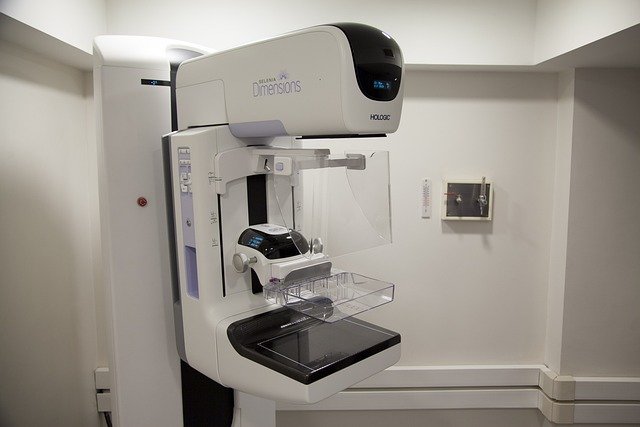Triple Negative Breast Cancer: Key Symptoms and Early Signs
Triple Negative Breast Cancer (TNBC) is an aggressive form of breast cancer that does not respond to common hormone therapies. This article explains the main symptoms and early signs, reviews treatment considerations, and highlights the importance of awareness for women’s health.

Triple negative breast cancer differs significantly from other breast cancer types due to its unique molecular characteristics. Unlike hormone-positive breast cancers, TNBC cells do not respond to hormone therapy or targeted HER2 treatments, making early identification crucial for effective management.
Common Signs and Physical Symptoms of TNBC
The physical manifestations of triple negative breast cancer often mirror those of other breast cancer types, though they may progress more rapidly. A new lump or mass in the breast tissue represents the most frequently reported symptom, typically feeling firm or hard to the touch. These lumps may appear suddenly and grow noticeably within weeks or months.
Changes in breast appearance also serve as important warning signs. Skin dimpling, puckering, or an orange-peel texture may develop over the affected area. Nipple changes, including inversion, discharge, or scaling, warrant immediate medical attention. Breast swelling, even without a detectable lump, can indicate underlying malignancy.
Persistent breast or chest pain, while less common as an initial symptom, should not be dismissed. Some individuals experience tenderness or discomfort that differs from normal cyclical breast changes associated with menstruation.
Early Indicators That May Signal TNBC
Early detection of triple negative breast cancer relies on recognizing subtle changes that may precede more obvious symptoms. Asymmetry between breasts, particularly when this represents a new development, can signal underlying pathology. Changes in breast size, shape, or contour deserve medical evaluation.
Lymph node involvement often occurs early in TNBC progression. Swollen lymph nodes in the armpit, above the collarbone, or around the breastbone may indicate cancer spread. These nodes typically feel firm, painless, and immobile.
Skin changes extending beyond the immediate breast area can provide early warning signs. Redness, warmth, or thickening of breast skin may suggest inflammatory processes. Persistent itching or rash that does not respond to typical treatments should prompt medical consultation.
Unexplained fatigue, weight loss, or general malaise, while nonspecific, may accompany early-stage disease in some individuals.
Understanding Risk Factors and Prevention
Certain demographic and genetic factors increase triple negative breast cancer risk. Age plays a significant role, with TNBC more commonly affecting younger women, particularly those under 40. African American and Hispanic women face higher incidence rates compared to other ethnic groups.
Genetic predisposition significantly influences TNBC development. BRCA1 mutations substantially increase risk, with approximately 70% of BRCA1-associated breast cancers being triple negative. Family history of breast or ovarian cancer, particularly at young ages, warrants genetic counseling consideration.
Lifestyle factors also contribute to overall breast cancer risk. Maintaining a healthy weight, limiting alcohol consumption, and engaging in regular physical activity may help reduce risk. Breastfeeding, when possible, provides protective benefits against aggressive breast cancer types.
While complete prevention remains impossible, risk reduction strategies include genetic testing for high-risk individuals, enhanced screening protocols, and prophylactic measures for those with significant genetic predisposition.
Diagnostic Procedures and Testing
Accurate TNBC diagnosis requires comprehensive evaluation combining imaging studies and tissue analysis. Initial assessment typically begins with clinical breast examination and mammography. However, dense breast tissue common in younger women may limit mammographic sensitivity, necessitating additional imaging.
Breast ultrasound provides detailed visualization of suspicious areas and guides biopsy procedures. Magnetic resonance imaging (MRI) offers superior soft tissue contrast and may detect multifocal or bilateral disease not apparent on conventional imaging.
Tissue biopsy remains the definitive diagnostic procedure. Core needle biopsy, performed under imaging guidance, provides sufficient tissue for both cancer confirmation and molecular subtyping. Pathological analysis determines hormone receptor status and HER2 expression, confirming triple negative classification.
Immunohistochemistry testing specifically evaluates estrogen receptor, progesterone receptor, and HER2 protein expression. Results showing less than 1% positive cells for hormone receptors and negative or 1+ HER2 staining confirm triple negative status.
Additional molecular testing may include Ki-67 proliferation index assessment and genetic profiling to guide treatment decisions and prognosis estimation.
This article is for informational purposes only and should not be considered medical advice. Please consult a qualified healthcare professional for personalized guidance and treatment.
Regular screening and prompt evaluation of concerning symptoms remain the most effective strategies for early TNBC detection. Healthcare providers can assess individual risk factors and recommend appropriate screening intervals based on personal and family history. Early identification significantly improves treatment options and outcomes for this aggressive breast cancer subtype.




